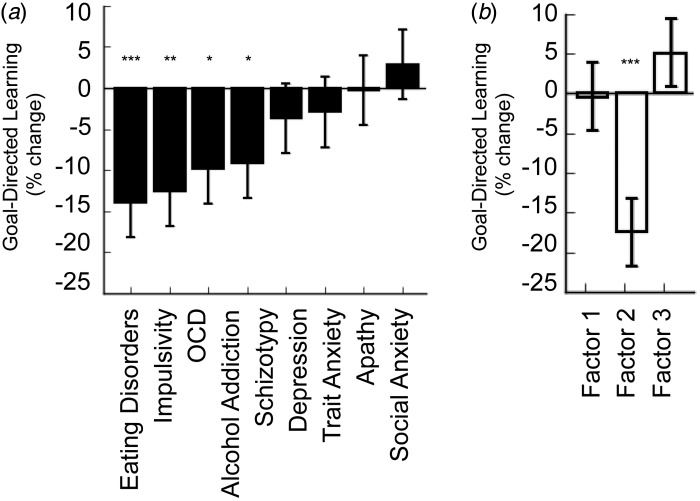Fig. 2.
Validating a trans-diagnostic dimension. (a) The strength of the association between self-report symptoms of various DSM disorders and deficits in goal-directed control. The pattern is strikingly non-specific. (b) The association between goal-directed deficits and three ‘trans-diagnostic symptom dimensions identified in a data-driven factor analysis. Factor 1 corresponds to ‘Anxious Depression’, Factor 2 is ‘Compulsive Behavior and Intrusive Thought’, and Factor 3 is ‘Social Withdrawal’. The association between Factor 2 (‘Compulsive Behavior and Intrusive Thought’) and deficits in goal-directed learning is greater than that of any of the nine DSM-inspired questionnaires and crucially, the relationship exhibits excellent specificity with respect to ‘non-compulsive’ aspects of psychopathology, i.e. Factor 1 (‘Anxious Depression’) and Factor 3 (‘Social Withdrawal’). Data reproduced with permission from Gillan et al. (2016b). *p < 0.05, **p < 0.01, ***p < 0.001.

